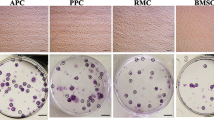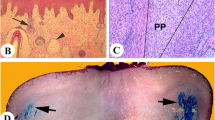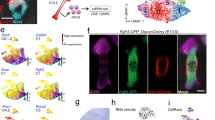Abstract
This article reviews the research findings on the piece of periosteum overlying the lateral crest of prepubertal deer frontal bone, known as antlerogenic periosteum (AP). AP was initially discovered by Hartwig and Schrudde in 1974 when searching for the tissue that gives rise to antlers. In their experiment, when AP was transplanted elsewhere on the deer body it formed ectopic antlers. This clearly shows that AP possesses full self-differentiating ability, an attribute that can only be paralleled by embryonic tissue in mammals, like lateral plate mesoderm (LPM). Studies along this line by Goss in the 1980s further demonstrated that AP also holds the patterning information for antler formation. In the 1990s, our group carried out a series of studies on this unique tissue. The results showed that some of the critical features of AP resemble those of embryonic tissues, such as the astonishing growth potential in vivo and in vitro, and rich glycogen content. Histological observations and cell lineage tracing using a genetic marker convincingly demonstrate that pedicles and antlers are the derivatives of AP. Based on these findings, we advanced a hypothesis that AP is a piece of postnatally retained embryonic tissue. Morphological and histological examinations on the presumptive antler growth regions in deer prenatal life showed that the growth of primordial pedicles is initiated in the early pregnant stage (about 55 days) but then ceases (about 100 days) and is subsequently repressed at the late stage of pregnancy. The epidermis overlying the primordial pedicles resembles the apical ectoderm ridge (multicellular layer). These results strongly support our hypothesis. The results from the specific comparison between deer antler formation (from AP in postnatal) and mammalian limb development (from LPM in prenatal) showed that the ontogeny of antlers and limbs are comparable, and that deer antler has the same level of regulative properties as mammalian limbs. We believe that revealing the mechanism underlying the retention of embryonic tissue properties by AP until deer postnatal life will have important implications in biomedical research. Antler formation from AP offers an ideal model to work with in investigating how a self-differentiating system functions.
Similar content being viewed by others
Author information
Authors and Affiliations
Additional information
Accepted: 18 June 2001
Rights and permissions
About this article
Cite this article
Li, C., Suttie, J. Deer antlerogenic periosteum: a piece of postnatally retained embryonic tissue?. Anat Embryol 204, 375–388 (2001). https://doi.org/10.1007/s004290100204
Issue Date:
DOI: https://doi.org/10.1007/s004290100204




